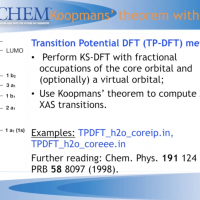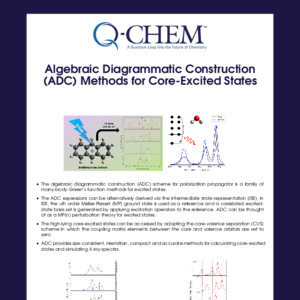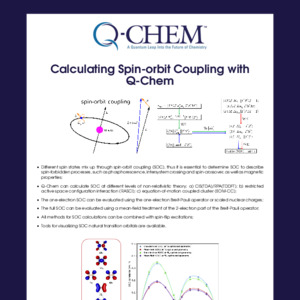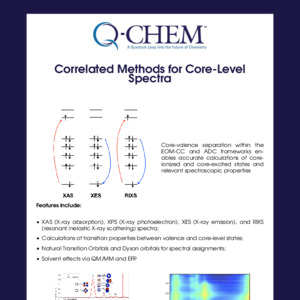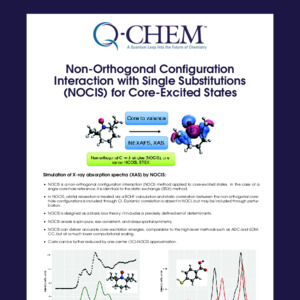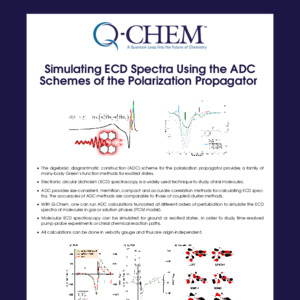Q-Chem Webinar 13
Studying X-ray Absorption Spectroscopy With Q-Chem

Dr. Nick Besley is an Associate Professor in Theoretical Chemistry at the University of Nottingham in the UK. He gained his PhD in 1997 under the supervision of Professor Peter Knowles at the University of Birmingham for work on coupled cluster theory. He subsequently held postdoctoral positions at The Scripps Research Institute USA with Professor Jonathan Hirst and at the University of Nottingham with Professor Peter Gill. In 2002 he was awarded an Advanced Research Fellowship from the Engineering and Physical Sciences Research Council and was appointed to a Lectureship in Theoretical Chemistry in 2005 and his current position in 2012. His research encompasses a wide range of areas with a predominant theme of the study of the spectroscopy of large molecular systems.
Abstract
The spectroscopy of core electrons has a long history and is used in many areas of research. The spectroscopy of core electrons offers a number of advantages over analogous techniques in the ultraviolet region. The spatially local nature of the core orbitals and large energy difference between core orbitals of different elements means that the spectroscopic techniques can provide an atom specific probe of electronic structure. Furthermore, in recent years there have been considerable advances in the quality and availability of X-ray sources, providing spectroscopy in the X-ray region with a richness in structure that can match more traditional spectroscopy in the ultraviolet region.
Theoretical calculations play an important role in the analysis and interpretation of experimental spectra. This Webinar will focus on the calculation of x-ray absorption spectroscopy within the framework of time-dependent density functional theory (TDDFT). The additional factors that need to be considered, and problems encountered when computing x-ray absorption spectroscopy compared to a TDDFT calculation to determine valence excited states will be discussed and the solutions available in the Q-Chem software will be described.
